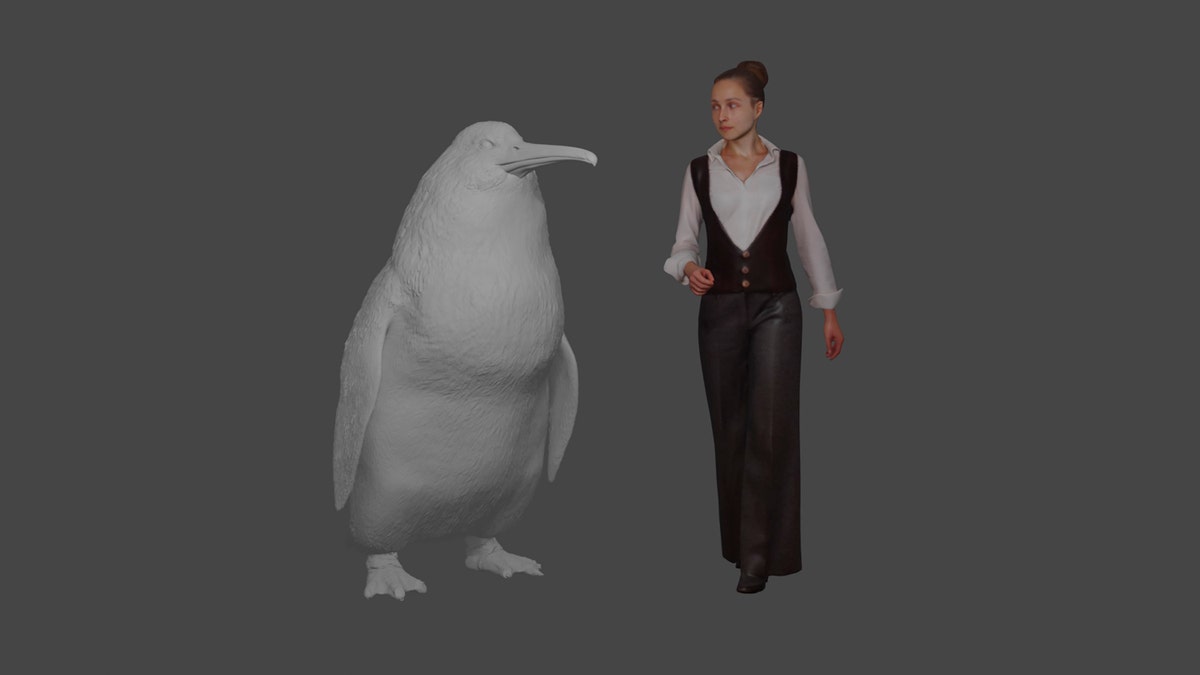Scientists have identified a new species of giant penguin from fossils discovered in New Zealand.
The extinct penguin lived in the Paleocene Epoch between 66 million and 56 million years ago, according to the Canterbury Museum.
Taller than the modern Emperor Penguin, the penguins, named Crossvallia waiparensis, stood about 5 feet and weighed up to 80 kilograms (176 pounds).
FOSSILS OF 'SQUAWKZILLA,' 19 MILLION-YEAR-OLD CANNIBAL PARROT, FOUND IN NEW ZEALAND
The fossils were discovered by amateur paleontologist Leigh Love at the Waipara Greensand fossil site in North Canterbury on New Zealand’s South Island in 2018. Canterbury Museum curators Paul Scofield, Vanesa De Pietri, and Gerald Mayr, of Senckenberg Natural History Museum in Frankfurt, Germany, studied the bones and found that they belonged to a previously unknown penguin species.

This illustration provided by the Canterbury Museum shows the approximate height of a giant penguin, a "crossvallia waiparensis," next to a human being. (Canterbury Museum via AP)
Scofield said the leg bones indicated the monster penguin's feet may have played a bigger role in swimming than is the case with penguins today.
He said that following the extinction of dinosaurs, marine reptiles and gigantic fish, it seemed there was an evolutionary opportunity for penguins to thrive and grow in size.
GAY PENGUINS ADOPT EGG AFTER ATTEMPTING TO HATCH STONES AT ZOO
"The oceans were ripe for the picking with the lack of mega predators," Scofield said, according to the Associated Press. "It looks like what was going on was that penguins were just starting to exploit that niche."

Dr. Paul Scofield, senior curator for natural history at Canterbury Museum, holds the fossil, a tibiotarsus, top, next to a similar bone of an Emperor Penguin in Christchurch, New Zealand, Wednesday, Aug. 14, 2019. (AP Photo/Mark Baker)
The findings were published this week in "Alcheringa: An Australasian Journal of Palaeontology."
CLICK HERE TO GET THE FOX NEWS APP

Dr. Paul Scofield, senior curator for natural history at Canterbury Museum, holds the fossil, a tibiotarsus, left, next to a similar bone of an Emperor Penguin in Christchurch, New Zealand, Wednesday, Aug. 14, 2019. (AP Photo/Mark Baker)
The huge penguin is just the latest remarkable prehistoric animal to be discovered by scientists in New Zealand. Nineteen million-year-old fossils of a giant parrot dubbed ‘Squawkzilla,’ for example, were found in Central Otago.
Fox News’ Chris Ciaccia and the Associated Press contributed to this article.
Follow James Rogers on Twitter @jamesjrogers

